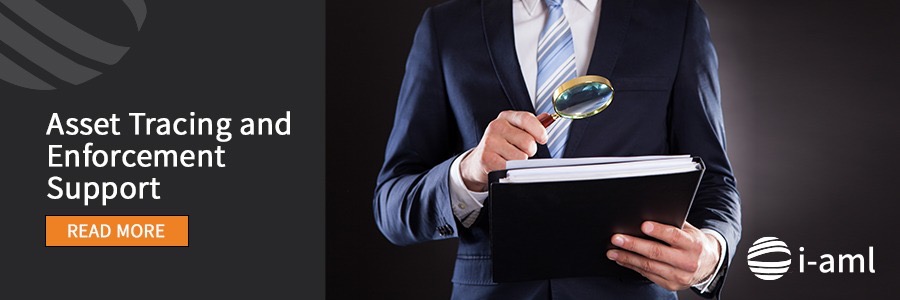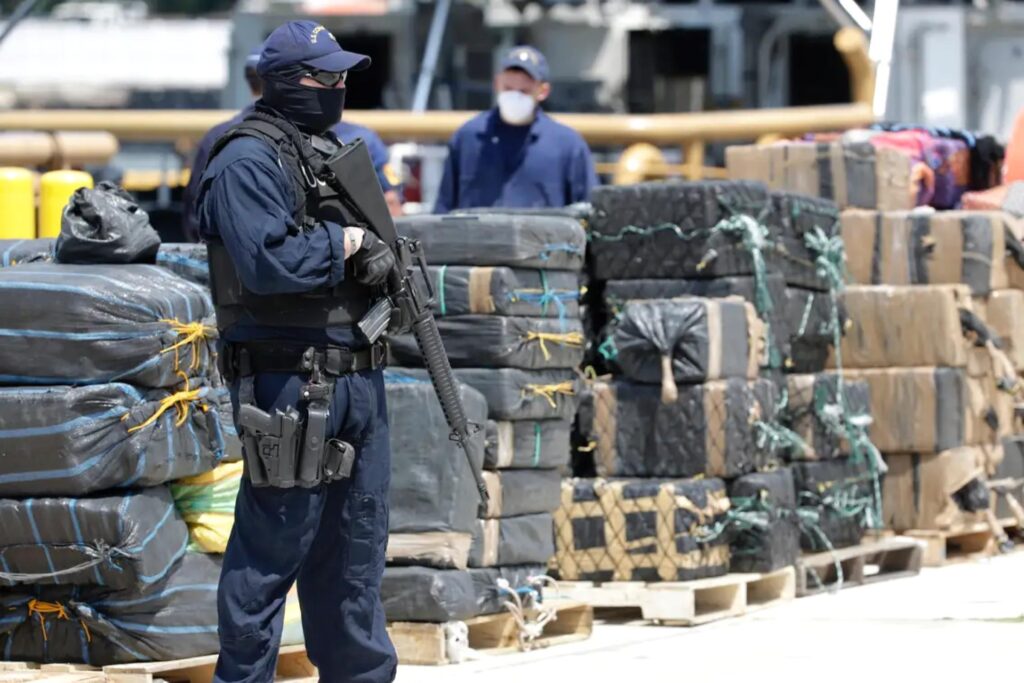The rise of synthetic drugs, in particular fentanyl and methamphetamine, has changed the landscape of opportunity for drug traffickers in Latin America. Highly potent and highly addictive, synthetic narcotics are also extraordinarily lucrative. But what to do with all that ill-gotten cash?
Criminal groups that have moved into synthetic drugs have made a parallel shift in the financial world. They are adapting their money laundering methods and using old favorites and new online forms.
The latest report from the Financial Action Task Force (FATF) on the nexus between synthetic drugs and money laundering techniques, published November 30, highlights just how many avenues criminal groups can turn to make illicit drug proceeds appear clean.
Here, InSight Crime explains organized crime’s path from synthetic opioid production and processing to blending its returns into the legal economy.
..

..
Supply Chains and Pill Presses
Fentanyl, and synthetic opioids in general, require access to a broad range of chemical precursors that organized crime has typically sourced from China and India.
In 2019, China took a firmer stance on fentanyl, banning the sale of some chemicals and severely restricting the actions of chemical producers in the country. Naturally, the illegal market began turning to intermediaries who could access the necessary chemicals for fentanyl production.
The report described these middlemen as a key node in precursor procurement for groups like the Jalisco New Generation Cartel (Cartel Jalisco Nueva Generación – CJNG) and the Sinaloa Cartel in Mexico, two of the most well-known illegal fentanyl suppliers of US markets. “Chemical ‘diverters’ or ‘middlers’ can create front companies and act as an intermediary between legitimate chemical producers and clandestine drug labs. Middlers sometimes set up physical storefronts or create an online presence,” the report stated.
Chinese companies have provided the Mexican market with precursor chemicals for years. In January, InSight Crime reported on how some 65 companies were identified as selling these chemicals online. The Brookings Institution noted that these sellers often specifically advertise their ability to “clear customs in Mexico.”
Cash in Hand
The report affirmed that many of the traditional money laundering techniques associated with older forms of drug trafficking still hold out today.
Trade-based money laundering (TBML), whereby criminal groups misrepresent the value of a commodity, trade in falsely declared commodities, or generally use the complexity of international trade flows to obscure financial movement, still holds sway.
The FATF pointed to a case involving transfers of manufactured fentanyl between Mexico, China, and India to illustrate how TBML creates a headache for law enforcement officers attempting to track illicit funds. In essence, Mexican traffickers received fentanyl from manufacturers in India and made bank payments to an account in Hong Kong, where the payments were transferred to an exporter in mainland China which undervalued the goods being shipped to India. By attaching the bank payments to undervalued goods, the money could pass through undetected to Indian importers who paid the original manufacturer in cash.
TBML has ridden on the coattails of globalization, and synthetic drug traffickers are profiting from expanded trade by camouflaging their proceeds behind armies of shell companies, offshore bank accounts, and intermediaries.
Mexican groups have even taken to using swaps to gain access to fentanyl and the precursor chemicals necessary to manufacture it. By trading illegally trafficked wildlife, particularly marine life, criminal groups can feed a massive black market in China that puts a high value on everything from sea cucumbers and jellyfish to shark fins. In return, specialized chemical traders provide chemical precursors for both fentanyl and methamphetamine.
While such swaps only work with high-volume and high-priced illegal goods from Mexico, they allow both sides to reduce their reliance on cash and eliminate the risks associated with laundering those initial payments.
Dark Web Used for Dark Purposes
As the Western Hemisphere’s drug markets evolve, so too do money laundering strategies. Dark web vendor sites, virtual asset payments, and a greater reliance on dedicated money laundering professionals have helped Latin American crime continue to hide its money in plain sight.
Dark web marketplaces have become central in the sale of synthetic drugs, where cryptocurrencies are typically used as a form of payment due to the benefits they provide in terms of anonymity and even sanctions evasion.
The report named AlphaBay and Hansa, two especially grand-scale online vendors, as emblematic of the complete digitization of synthetic drug trafficking and illicit payments. AlphaBay was dismantled in 2017, and according to one staff member “serviced over 200,000 users and 40,000 vendors. Around the time of takedown, there were over 250,000 listings for illegal drugs and toxic chemicals on AlphaBay,” along with a veritable treasure chest of other illegal products.
Purchases on these dark websites tend to rely on cryptocurrencies like Bitcoin, Ethereal, or Monero, but these currencies are applicable beyond online sales as well.
Digital payment platforms, mainly virtual asset service providers (VASPs), have exploded onto the synthetics money laundering scene, in part because of the relative infancy of these services, which sees governments woefully outmatched in attempting to regulate them.
A VASP is simply a platform for exchanging cryptocurrencies and is in no way inherently illegal. These can, however, be employed by criminal organizations looking to launder proceeds, sometimes through multiple cryptocurrencies, before converting them to cash. VASPs democratize such attempts to hide illicit transactions.
Money Launderers by Trade
Drug trafficking organizations have become increasingly adept at subcontracting various stages of the trafficking process out to different affiliates. Money laundering is no exception. The FATF highlighted the proliferation of Asian money laundering organizations within Latin American drug trafficking circles, especially in Mexico.
For years, Mexican cartels have looked to Chinese money laundering rings to move their money across borders through Chinese banking apps outside of the purview of the Mexican and US financial authorities. These groups offer organized crime a means to extricate their money, and moving drug proceeds through Chinese banking apps provides an additional layer of protection.
Whether money is being transferred through bank payments or VASPs, the exact amount is typically kept relatively low so as not to flag officials’ notice. The specific amount depends on the jurisdiction where money is being laundered. For example, the FATF pointed to typical examples in North America where money laundering professionals carried out wire transfers all below the $10,000 reporting threshold at “multiple money services businesses over a short time, normally with cash or prepaid credit cards.”
..
December 9, 2022 Published by The InsightCrime.






